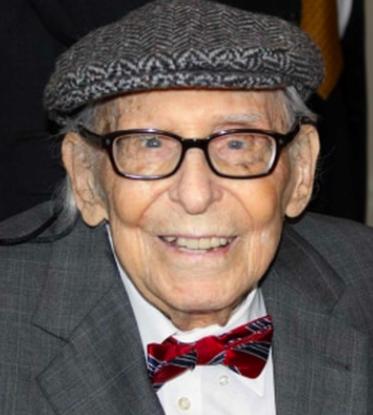Alumni
Robert H. Simpson ’32, Medal of Honor
Open gallery

It is likely that Bob Simpson’s passion for hurricane research stemmed from his own experience. As a young boy growing up in Corpus Christi, he narrowly survived a powerful hurricane and was a spectator to the incredible devastation the storm caused. After earning a scholarship to Southwestern University to play trumpet in the orchestra, Simpson took a physics class at the school which piqued his interest in studying the physical world. Later, he earned a Master degree of Science from Emory University, as well as a doctorate in meteorology from the University of Chicago.
In 1940, Dr. Simpson began his career with the United States Weather Bureau, working first as a junior observer of meteorology and then as a hurricane forecaster. This led to an assignment in Panama, creating the Army Air Force weather school, and the founding of a weather observation station in Hawaii. He flew a research mission into Typhoon Marge aboard a specifically equipped Air Force weather plane. After years of modest hurricane research budgets, the devastating 1954 hurricane season convinced Congress to pass a special appropriation to improve the Weather Bureau’s hurricane warning system, and Bob Simpson was chosen to lead this special project.
By 1968, Simpson was the Director of the National Hurricane Center, during which time he co-developed the Saffir-Simpson Hurricane Scale (SSHS) with Herbert Saffir, established a dedicated satellite unit at NHC, and began issuing advisories on subtropical storms. By this time, Bob Simpson had also met and married his wife, Joanne, the first woman to earn a PhD in meteorology and a great contributor to the atmospheric sciences in her own right.
Dr. Simpson was a dedicated professional and promoter of science in the service of the United States. A colleague of his remarks that “he very consciously turned down higher positions in the U.S. Weather Bureau to pursue his vision of a research and prediction facility dedicated to tropical meteorology and hurricanes. He had to work hard to persuade the upper level administration to allow him to take a demotion to achieve his goals.”
Bob and Joanne Simpson were well known for fostering the careers of young scientists. Their dedication to furthering educational opportunities in meteorology led them to create the Max A. Eaton Prize, aimed at student papers in tropical meteorology, and the Banner I. Miller Award, meant to foster general tropical weather research. But much of what they did for students in the field was on a more personal level, interacting and collaborating with young scientists to promote their understanding and development as scientists.
From Texas to Maine, the system of hurricane preparedness that we rely on today is built on the foundation of Bob Simpson’s work. Countless lives have been saved because of his contribution to our understanding of hurricanes and our ability to forecast their tracks. As director of the National Hurricane Research Project and then the National Hurricane Center, he pressed back the boundaries of existing knowledge and pushed against a bureaucracy hesitant to improve. And all of this he did with a warm, Texas smile. Throughout his life, he remained optimistic about humanity and our ability to deal with disasters and misfortune.
It is for these invaluable contributions to the field of meteorology and storm research that the Southwestern University Alumni Association presented the 2017 Medal of Honor to the late Dr. Robert Simpson, who passed away in 2014 at the age of 103.














